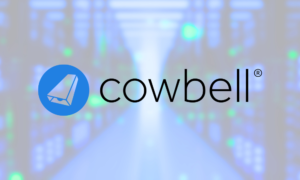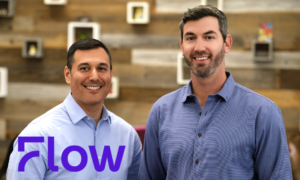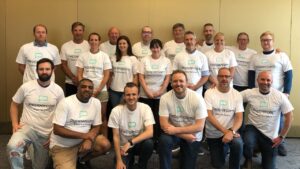The industry now has thousands of pages of reports and/or KPIs being produced daily. Advanced analytics has unlocked significant value for companies but the sheer volume of information gives rise to a new challenge – how do we digest all the internal and external information available to us on a daily or even instantaneous basis and use that information to make better strategic business decisions? How do we make our models smart enough so that they can inform us, not just give us the results? Automation can help. It can filter through all the data and glean the nuggets of information that can help allocate the human resources we have.
Building a smarter model and leveraging AI, all help on the microscale. With one specific line of business or that one piece of information insurers can build models smart enough to say what’s most important and what’s not. How do companies aggregate all the lines of business and reporting that are in place? How do they surface what is most important and most pressing that requires their attention?
From the chief underwriter officer’s perspective, they want to know where the company is getting rates and where they are losing to competitors. If the company is winning too much, they are underpriced across all lines of business. That’s the kind of information that is imperative to a CUO’s decision-making. That is different from the chief financial officer, who looks at rates as the most important information. Does the CFO want to know if reserves are behaving as expected or if the company sees adverse development in the reserves?
From the chief actuary’s position, the most important issue is where processes have been automated so that users are notified when things start to get outside set expectations. Automation can be run on a weekly or daily basis to be able to service that information.
For example, some companies from a reserving standpoint, prefer not to review all their classes every quarter. Automation can be built to monitor the data as it comes in, where information is pulled, compare it to the expectations that were set and where they are breaking away from the tolerances. The system can be set up to notify the company when the system is getting outside of those tolerances. It means that companies can know going into quarter-end when doing their financial reporting, where they need to invest the time and effort to better allocate their resources. They can also do things outside the quarterly process to tackle the things that are going wrong before they get to the quarter-end. They can take action to mitigate what they are seeing while making better use of resources.
New trends in reserving
Automation can also help a company with its reserving by looking at the risks on a more granular level – a trend that is very prevalent today. There are significant benefits to granularity. That means more homogenous groupings of claims, making it more predictable. It is also helpful outside of reserving, in underwriting and other broader areas.
Instead of looking to be more granular, companies should look at how to find the optimum level of granularity; reduce granularity in some areas where it makes no impact and intensify granularity in areas where it makes all the difference with the least amount of effort. These are new trends that companies haven’t thought about. How do companies make the best use of their resources? It’s a newer way of thinking. There’s an element where companies want to be efficient with what they have, but the menial work doesn’t add value. Companies need to focus on strategic work. A company is more likely to retain an employee that is doing strategic work, instead of manipulating data – that’s a big element. With automation, companies can level the playing field and replace people who are new to the process.
If the process is manual, and not well codified, it’s difficult to train someone to understand the process. If it’s automated, that individual just needs to use their judgment; they don’t have to be an expert, with years of experience, they just have to understand the reserving process. In other words, companies can use people to their full potential.
Companies with long-tenured underwriters know the unwritten rules – where to go, the people to talk to; this level of experience can’t be replicated by someone new to the business. Instead of having so much of the knowledge and analytics ingrained in people, there can be an automated way of surfacing that information and the experience gap can be mitigated. As a result, companies have the best information available to them and no one is disadvantaged by the newer or less familiar work processes.
The journey for companies
The question becomes, how can automation enable the efficient digestion of all available data and through the automated use of analytics, bring the end-user pieces of information that require action, focus the limited bandwidth of human resources and ensure that human capital is focused on the highest value work?
Case studies show automation and analytics can be used to either significantly reduce manual effort while keeping quality high or where automation can uncover new opportunities to improve the way insurers do their jobs.
The ‘automation journey’ means insurers don’t have to be overwhelmed; they can start simple. For example, they don’t need the fanciest model but can start by just ranking and looking at the top decile/quartile or top and bottom decile. It can also include the next steps to use statistical tests and analytical models, how to monitor models over time and use the results to enable machine learning algorithms to adjust the models. Ultimately, insurers can use the results to train AI that can enable even greater levels of automation and insights in the future. Looking at the underwriting side, companies must look to triage submissions.
On the commercial side, you may not be able to price them all. The best way to tackle it is to be the most profitable and price the most important first. The question becomes, how do companies measure to win, and how much is needed to be profitable?
Insurers need to understand any given quote, to win that account, based on similar accounts, you must have the best price in the market. Companies can build analytic models that help them to understand how likely they are to win or lose on the account. To some extent if a company consistently wins, there are two reasons: they are underpricing but are not likely to make money or they understand this niche better and can target good, profitable risks and better pricing than their peers. Companies need to break into the top quartile and not quote the bottom quartile; they need to prioritize. If a company only does the top quartile, they need enough premium base. Where are they breaking even? Companies need to support the scale, to balance their expenses.
We’re entering a new age of insurance where we have big and better data; we’re going to find ways to tap into new data external to the company and that world of data is going to continue to expand.
The companies that are going to win will know how to harness that data. Just being bigger or having more history isn’t going to be enough of an edge. Companies will succeed if they make use of this broadly available information, where they take this wealth of data and distill what is most important and as close to real-time as possible. It’s not just the most external data, but who best utilizes that information to have the competitive edge.
Source: Digital Insurance








